4.1 Oscillations
Simple harmonic oscillators
Oscillations are periodic motions which center around an equilibrium position.
An object undergoes simple harmonic motion when is experiences a force that is proportional and opposite of the displacement from the equilibrium position.
For example: a pendulum or guitar strings
A simple pendulum
A mass-spring system
4.2 Travelling waves
Travelling waves
A travelling wave is a disturbance in a medium that is created by a vibrating object and subsequently travels through a medium from one location to another, transporting energy as it moves.
For example, ocean waves
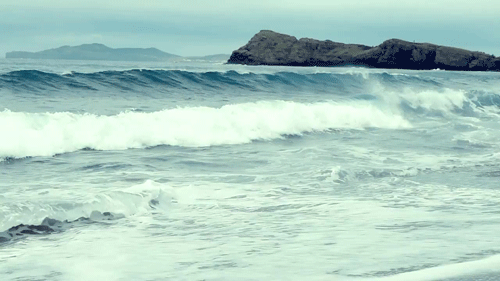
All waves transfer energy but not matter
The direction of a wave is defined by the direction of the energy transfer.
Wavelength, frequency, period and wave speed

Frequencymeasured in Hertz (Hz) is the number of times the object oscillates per unit time
Periodmeasured in seconds is the time taken for one complete oscillation
Wave speed
Transverse and Longitudinal waves
| Transverse waves | Longitudinal waves |
|---|---|
| The direction of oscillation is perpendicular to the direction of the wave | The direction of oscillation is parallel to the direction of the wave |
| Ocean waves, wave in a guitar string, electromagnetic waves | Sound waves, earthquake P waves |
| A point with maximum positive displacement is called a crest | A region where particles are closed to each other is called a compression |
| A point with minimum displacement is called a trough | A region where particles are furthest apart from each other is called a rarefaction |

Electromagnetic waves
EM waves travel at the speed of light 3x108 ms-1
EM waves are transverse waves

Sound waves
Speed of sound in dry air at 0° Celcius is 331.3 ms-1
Sound waves are longitudinal waves
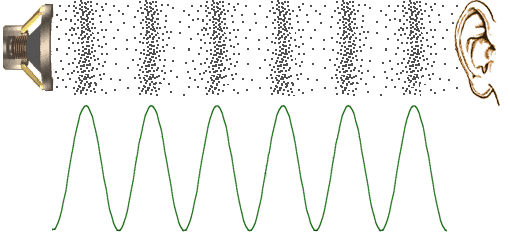
4.3 Wave characteristics
Wavefronts and rays
Wavefronts are lines joining points which vibrate in space (straight or curved). The distance between successive wavefronts is the wavelength of the wave.
Rays are lines which indicate the direction of wave propagation. They are perpendicular to wavefronts.

Amplitude and intensity
The amplitude and intensity of a longitudinal wave are related to its energy.
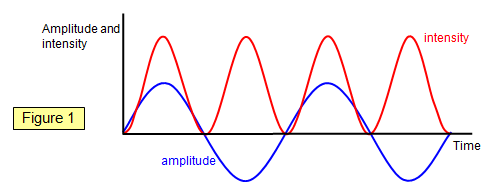
Superposition
When two or more waves cross at a point, the displacement at that point is equal to the sum of the displacements of the individual waves.
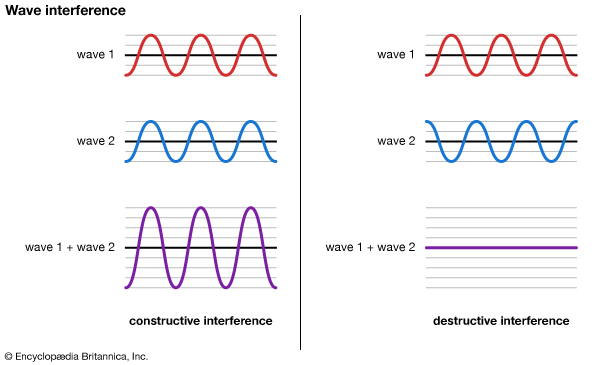
Constructive interference is when two waves add up, as they are in phase
Destructive interference is when two waves cancel out, as they are (in this instance) 180° out of phase
Constructive and destructive interference video explanationPolarization
Polarization occurs to light, as it is a transverse wave.
It refers to the orientation of the oscillation of the electric field.
Light is plane polarized if the electric field oscillates in one plane.

Polarization by reflection
When light is transmitted across a boundary between two mediums with different refractive indexes, part of the light is reflected and the remaining part is refracted.
The reflected light becomes a mixture of polarized and unpolarized light, called partially polarized light.
The extent to which the reflected light is polarized depends on the angle of incidence and the refractive index of the two mediums.
The angle of incidence at which the reflected light is totally polarized is called the Brewster’s angle (ϕ)
When the angle of incidence is equal to Brewster’s angle, the reflected ray is totally polarized and the reflected ray is perpendicular to the refracted ray.
 Polarization Brewster's angle video
Polarization Brewster's angle video
Polarizers and Analyzers
Polarizer: a sheet of material polarizing light, when unpolarized light passes through it the intensity of the light is reduced by half.
Analyzer: when polarized light passes through a polarizer, its intensity will be reduced by a factor dependent on the orientation of the polarizer. This property allows us to deduce the polarization of light by using an analyzer.
Malus' law

4.4 Wave behaviour
Reflection and refraction
Reflection
Angle of incidence is equal to the angle of reflection

Reflection of waves from a fixed end is inverted. Reflection of waves from a free end is not inverted.

Refraction
Refraction is the change in direction of a wave when it transmits from one medium to another.
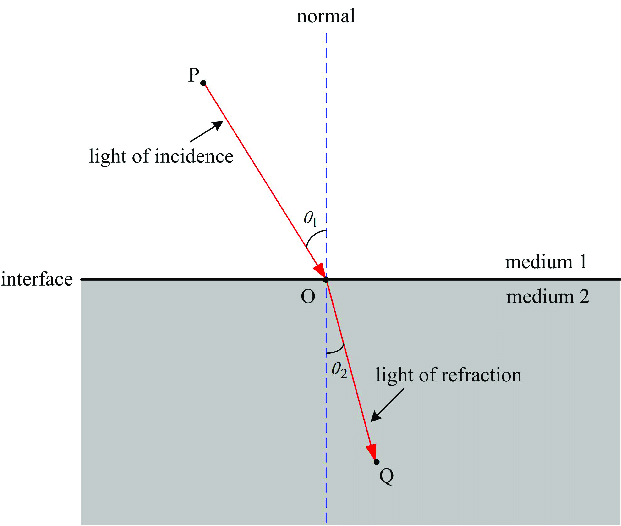
Snell's law

Furthermore, Snell's law could be expanded to:
Snell’s law, critical angle and total internal reflection

If angle of incidence is smaller than critical angle, most the light passes through.
If the angle of incidence is equal to the critical angle, the light travels across the surface.
If the angle of incidence is greater than the critical angle, the light is reflected back.
Calculating critical angle
Refractive index tableTotal internal reflection only occurs when the light ray propagates from a optically denser medium to an optically less dense medium.
Diffraction through a single-slit and around objects
Single slit
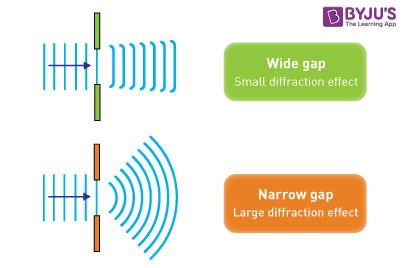
The narrower the gap the larger the diffraction effect
Video demonstrationDiffraction around obstacle
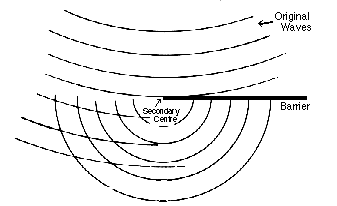
Diffraction is the slight bending of light as it passes around the edge of an object. The amount of bending depends on the relative size of the wavelength of light to the size of the opening. If the opening is much larger than the light's wavelength, the bending will be almost unnoticeable. However, if the two are closer in size or equal, the amount of bending is considerable, and easily seen with the naked eye.
Video demonstrationInterference patterns

Double-slit interference
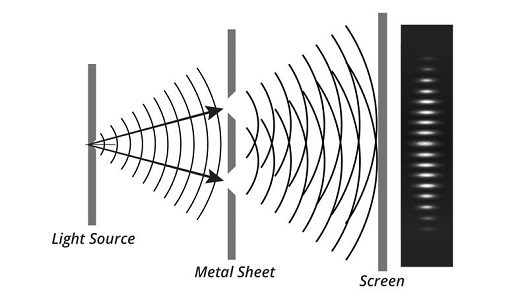 Demonstation by Veritasium
Demonstation by VeritasiumYoung's experiment
Path difference
Explanation from the Physics classroom4.5 Standing waves
The nature of standing waves
Standing waves result from the superposition of two opposite waves which are otherwise identical.
Standing waves don't transfer energy.

Animation of a standing wave (red) created by the superposition of a left traveling (blue) and right traveling (green) wave
 Standing waves demonstration with a slinky
Standing waves demonstration with a slinky
Boundary conditions

Strings and closed pipes create standing waves in an equivalent way.
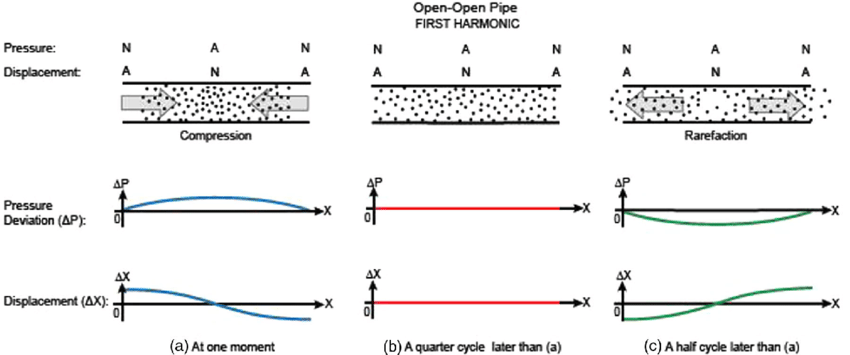
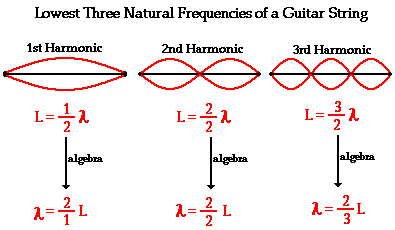
Notes and antinodes
Nodes are fixed positions along a standing wave. Node is the minumum, and antinode is the one with the largest displacement.
The distance between two adjecent nodes is λ/2

| Standing waves | Travelling waves |
|---|---|
| No energy propagated | Energy propagated |
| Nodes and antinodes | Neither |
| Amplitude varies along the wave | Amplitude stays constant along the wave |
| Particles between two adjacent nodes oscillate in phase and particles separated by exactly one node oscillate in antiphase | The phase difference between two particles of a travelling wave can take any value between 0 and 2π |
Topic 4 Problems
Number of correct answers: